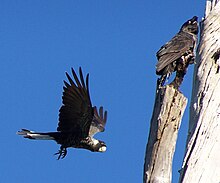
Cape Arid National Park is a national park located in Western Australia, 731 kilometres (454 mi) southeast of Perth. The park is situated 120 kilometres (75 mi) east of Esperance and lies on the shore of the south coast from the eastern end of the Recherche Archipelago.

A cockatoo is any of the 21 species of parrots belonging to the family Cacatuidae, the only family in the superfamily Cacatuoidea. Along with the Psittacoidea and the Strigopoidea, they make up the order Psittaciformes. The family has a mainly Australasian distribution, ranging from the Philippines and the eastern Indonesian islands of Wallacea to New Guinea, the Solomon Islands and Australia.

The yellow-tailed black cockatoo is a large cockatoo native to the south-east of Australia measuring 55–65 cm (22–26 in) in length. It has a short crest on the top of its head. Its plumage is mostly brownish black and it has prominent yellow cheek patches and a yellow tail band. The body feathers are edged with yellow giving a scalloped appearance. The adult male has a black beak and pinkish-red eye-rings, and the female has a bone-coloured beak and grey eye-rings. In flight, yellow-tailed black cockatoos flap deeply and slowly, with a peculiar heavy fluid motion. Their loud, wailing calls carry for long distances. The yellow-tailed black cockatoo is found in temperate forests and forested areas across south and central eastern Queensland to southeastern South Australia, including a very small population persisting in the Eyre Peninsula. Two subspecies are recognised, although Tasmanian and southern mainland populations of the southern subspecies xanthanotus may be distinct enough from each other to bring the total to three. Birds of subspecies funereus have longer wings and tails and darker plumage overall, while those of xanthanotus have more prominent scalloping. The subspecies whiteae is found south of Victoria to the East of South Australia and is smaller in size.

Perth Zoo is a 17-hectare (41-acre) zoological park in South Perth, Western Australia. The zoo first opened in 1898 and by 2011 housed 1258 animals of 164 species and an extensive botanical collection. It is a full institutional member of the Zoo and Aquarium Association (ZAA) and the World Association of Zoos and Aquariums (WAZA).

The sulphur-crested cockatoo is a relatively large white cockatoo found in wooded habitats in Australia, New Guinea, and some of the islands of Indonesia. They can be locally very numerous, leading to them sometimes being considered pests. A highly intelligent bird, they are well known in aviculture, although they can be demanding pets.

The Wheatbelt is one of nine regions of Western Australia defined as administrative areas for the state's regional development, and a vernacular term for the area converted to agriculture during colonisation. It partially surrounds the Perth metropolitan area, extending north from Perth to the Mid West region, and east to the Goldfields–Esperance region. It is bordered to the south by the South West and Great Southern regions, and to the west by the Indian Ocean, the Perth metropolitan area, and the Peel region. Altogether, it has an area of 154,862 square kilometres (59,793 sq mi).

The red-tailed black cockatoo also known as Banksian- or Banks' black cockatoo, is a large black cockatoo native to Australia. Adult males have a characteristic pair of bright red panels on the tail that gives the species its name. It is more common in the drier parts of the continent. Five subspecies are recognised, differing chiefly in beak size. Although the more northerly subspecies are widespread, the two southern subspecies, the forest red-tailed black cockatoo and the south-eastern red-tailed black cockatoo are under threat.

Carnaby's black cockatoo, also known as the short-billed black cockatoo, is a large black cockatoo endemic to southwest Australia. It was described in 1948 by naturalist Ivan Carnaby. Measuring 53–58 cm (21–23 in) in length, it has a short crest on the top of its head. Its plumage is mostly greyish black, and it has prominent white cheek patches and a white tail band. The body feathers are edged with white giving a scalloped appearance. Adult males have a dark grey beak and pink eye-rings. Adult females have a bone-coloured beak, grey eye-rings and ear patches that are paler than those of the males.

Baudin's black cockatoo, also known as Baudin's cockatoo or the long-billed black cockatoo, is a species of genus Zanda found in southwest Australia. The epithet commemorates the French explorer Nicolas Baudin. It has a short crest on the top of its head, and the plumage is mostly greyish black. It has prominent white cheek patches and a white tail band. The body feathers are edged with white giving a scalloped appearance. Adult males have a dark grey beak and pink eye-rings. Adult females have a bone coloured beak, grey eye-rings and ear patches that are paler than those of the males.
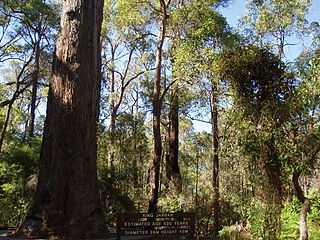
Jarrah Forest, also known as the Southwest Australia woodlands, is an interim Australian bioregion and ecoregion located in the south west of Western Australia. The name of the bioregion refers to the region's dominant plant community, jarrah forest – a tall, open forest in which the dominant overstory tree is jarrah.
Monjebup Reserve is a 20.63 km2 nature reserve in south-west Western Australia. It is 140 km north-east of Albany, 340 km west of Esperance and 430 km south-east of Perth. It is owned and managed by Bush Heritage Australia (BHA), by which 9.56 km2 of it was purchased in 2005, with another 11.07 km2 in 2010, and forms part of BHA's Gondwana Link project.

Eucalyptus loxophleba, commonly known as York gum, daarwet, goatta, twotta or yandee, is a species of tree or mallee that is endemic to Western Australia. It has rough bark on the trunk, smooth olive to brownish bark above, lance-shaped adult leaves, flowers buds in groups of between seven and eleven, white flowers and conical fruit.

Gidgegannup Important Bird Area is a highly fragmented tract of land, where the fragments are patches of remnant native vegetation, bounded by a circle roughly 12 km in diameter. It is in south-western Western Australia about 30 km north-east of Perth and on the edge of the Perth suburban region. The towns of Gidgegannup and Parkerville lie on the periphery. It has been identified by BirdLife International as an Important Bird Area (IBA) because it supports at least 450 Baudin's black-cockatoos, as well as small numbers of Carnaby's black-cockatoos, in roost sites outside the breeding season within foraging range of feeding habitat. The IBA also supports red-capped parrots, rufous treecreepers, western spinebills, western thornbills and western yellow robins.
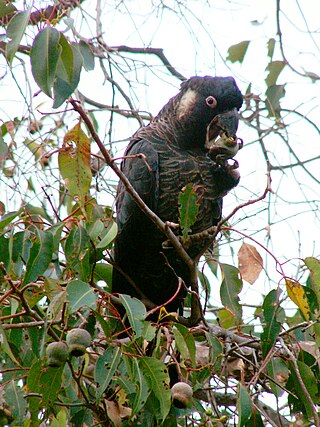
North Dandalup Important Bird Area comprises a highly fragmented 76 km2 tract of land lying about 50 km south of Perth in the Peel region of south-west Western Australia. It is named after the nearby small town of North Dandalup.

The Lakes Important Bird Area comprises some 72 km2 of land near the community of The Lakes in the Shire of Mundaring on the eastern fringe of the metropolitan area of Perth, Western Australia. It is an important site for the conservation of threatened Western Australian black cockatoos.

The Araluen-Wungong Important Bird Area is a 123 km2 tract of land in the Darling Ranges on the south-eastern fringe of the city of Perth, Western Australia. The name derives from the Araluen Botanic Park within the Important Bird Area (IBA), and the adjacent suburb of Wungong. It is an important site for black cockatoos.
Ivan Clarence Carnaby was an Australian farmer, naturalist and ornithologist. He was born in Subiaco, Western Australia. He published many papers on Southwest Australian birdlife in Emu, The Western Australian Naturalist and Western Australian Bird Notes. He also made several botanical collecting journeys with Henry Steedman. He is commemorated in one of the common names of Carnaby's cockatoo, also known as the short-billed black cockatoo, which he described in 1948. Carnaby first suggested the existence of more than one kind of white-tailed black-cockatoo in the 1930s, something later confirmed by research.
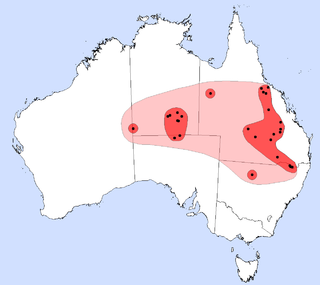
Setirostris eleryi is a species of small insectivorous bat found in inland eastern Australia. It is the sole species of the molossid genus Setirostris, a name that refers to the coarse bristles on their faces. Earlier common names have referred to this unique feature, and the 'free-tail' that is a common feature of its microchiropteran family, the Molossidae; no single common name emerged during the taxonomic revisions that identified what was referred to as the bristle-faced freetail.

Kensington bushland reserve is a significant remnant of Swan Coastal Plain vegetation, that has been reserved in the suburb of Kensington, in Perth, Western Australia, by the state government.
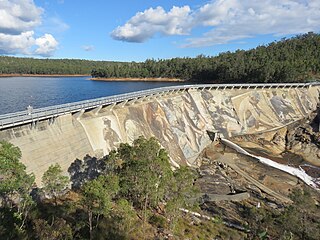
Wellington National Park is a national park in Western Australia, located 10 kilometres (6 mi) west of Collie and approximately 215 km (134 mi) south of Perth in the Shire of Collie along the Coalfields Highway.

